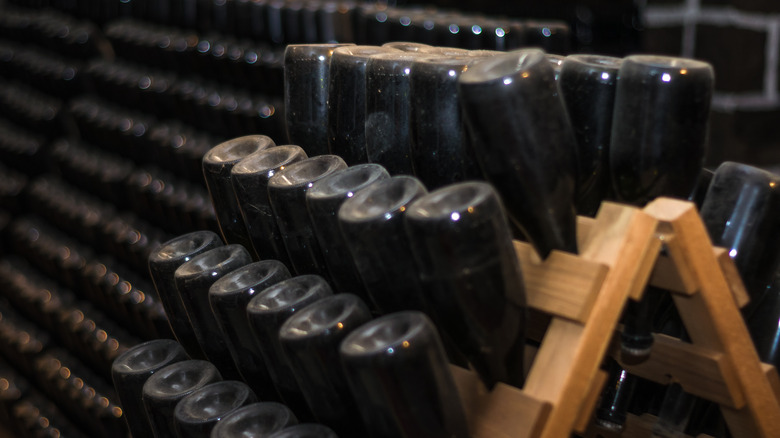The Fermentation Method That Makes Crémant Different From Prosecco
Champagne, prosecco, cava — when it comes to sparkling wine, these three varieties tend to dominate. Yet there is another variety of fizz loved by vino devotees but still under the radar of casual buyers. Known as crémant, you definitely need to invite it to your next wine-tasting party.
For a sparkling wine to be classed as a crémant, it must be made in one of nine regions — eight in France and one in Luxembourg. And as these regions stretch from Limoux in the south to Alsace on the banks of the upper Rhine, it offers an exciting new world of wine to explore (via Wine-Searcher). Their national crémant is the latest addition, only earning the right to give itself this name in 1991.
The name itself also offers a clue to some of its appeal. As stated by Vine Pair, crémant gets its name from the French word for "creamy." This is due to the velvety texture of its bubbles, which are frothy rather than sparkly. And according to Savage Vines, some types taste strikingly like champagne — so much so that unless you've got an expert palate, you probably couldn't tell them apart. Yet as crémant tends to be much cheaper than the iconic drink, you can enjoy all of the latter's fizzy charisma for a fraction of the price.
That said, why should you choose crémant over a similarly affordable sparkling wine, such as prosecco? Or are they pretty much interchangeable? There are some key distinctions, partly due to the different fermentation processes used to create them.
Crémant is made by a double fermentation process that creates a frothy rich texture
Like crémant, prosecco is a protected term. It refers to wines made in the Italian village of the same name (via MasterClass). Prosecco is fermented using the Charmat method, where the fizz is produced in a stainless steel pressure tank. And according to Taste, this approach creates the drink's delicate flavor profile. The Charmat method also creates lighter, spritzier bubbles with less of a sparkle factor. That is why you'll see "frizzante" (semi-sparkling) on the bottle label, which means it's less fizzy.
In contrast, crémant — like champagne — is made using the French "traditional method" of double fermentation. As outlined by Savage Vines, it is first fermented in stainless steel tanks or oak barrels and then poured into bottles with yeast and sugar. This is where the magic happens, as the wine starts producing carbon dioxide and, as a result, fizz.
Finally, it's aged for at least nine months before it can be popped, per Wine Enthusiast. As Ellis Wines explains, this slower, bottle-based fermentation process gives crémant a frothier crown (or "mousse") than prosecco, with more lasting bubbles. This method can acquire certain desirable flavor notes such as "lemon, apple, honeysuckle, and brioche."
In short, crémant is earthier and richer than prosecco with a satiny fizz. Prosecco is a lighter, fruitier and sweeter drink on the whole. With prosecco, you get playfulness; with crémant, you get depth.

